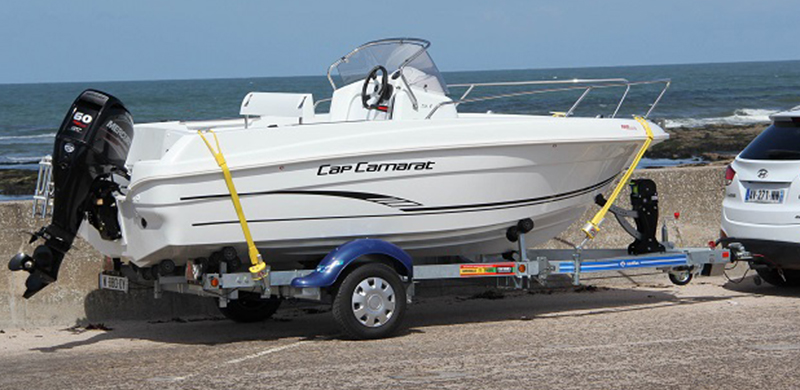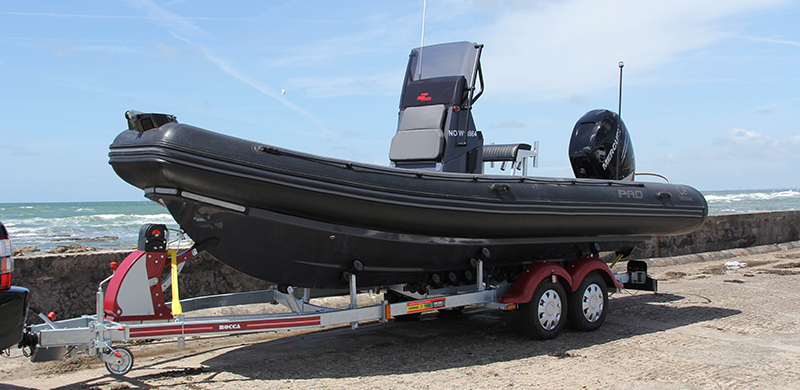STANDARDS, OBLIGATIONS AND RESPONSIBILITIES: WHAT YOU NEED TO KNOW
The trailer is often considered as an accessory, nevertheless, some safety elements should not be neglected when it comes to transporting at more than 100 km/h a mass of several tons.
For your safety and that of other road users, it is important to know the following elements:
1. THE WINCH
Many users still think that the winch is used both for handling the boat and for securing it to the trailer. This is not true, and the risk is to cause an accident and to see your responsibility engaged in case of expertise.
The winch is only used to handle the boat, and its use is highly regulated.
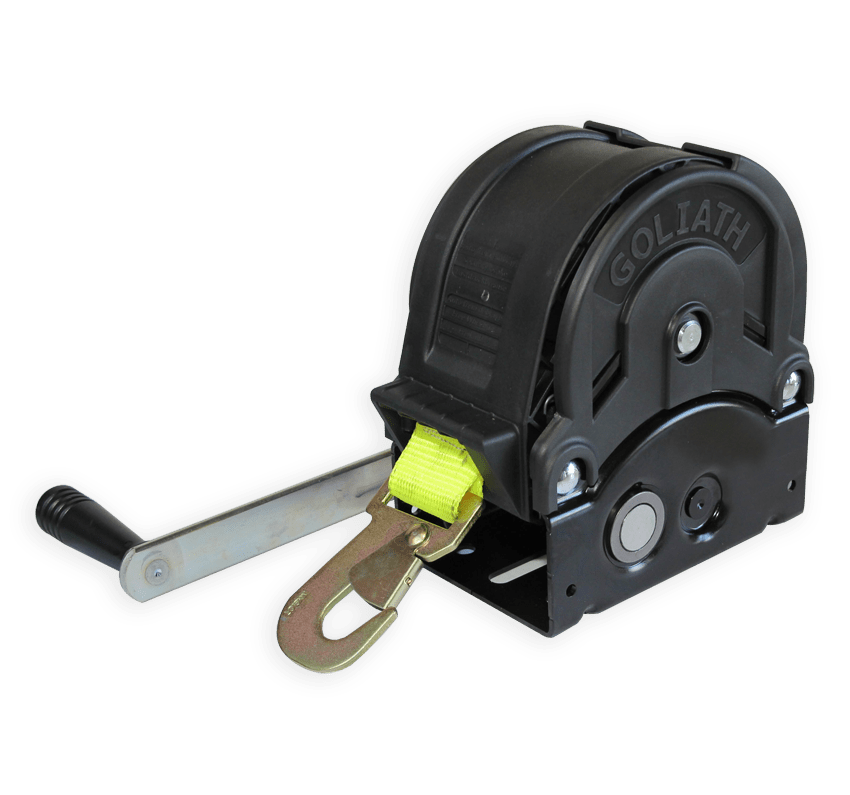
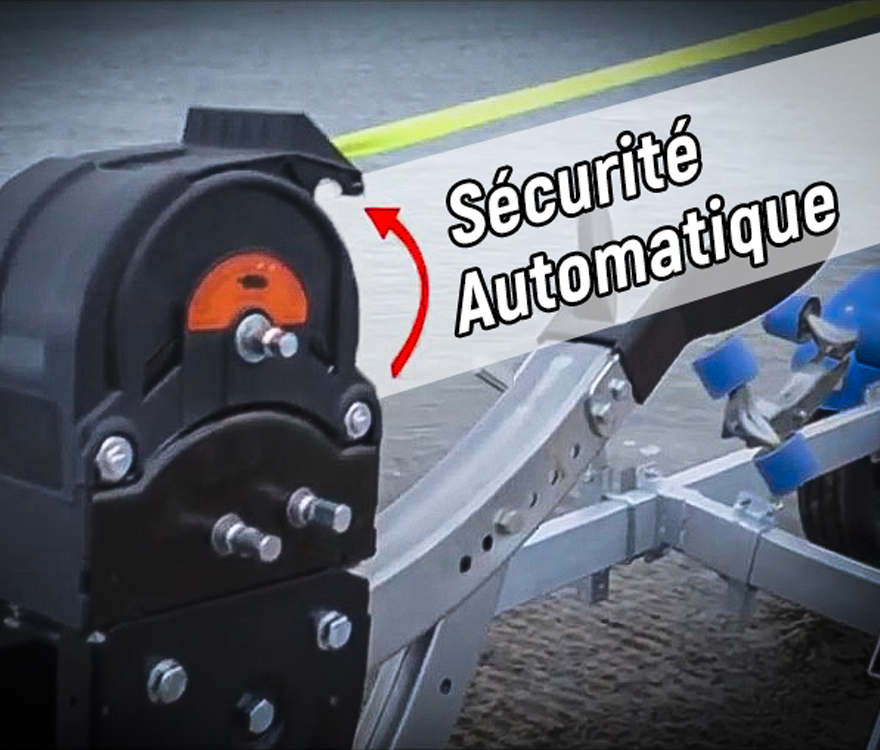
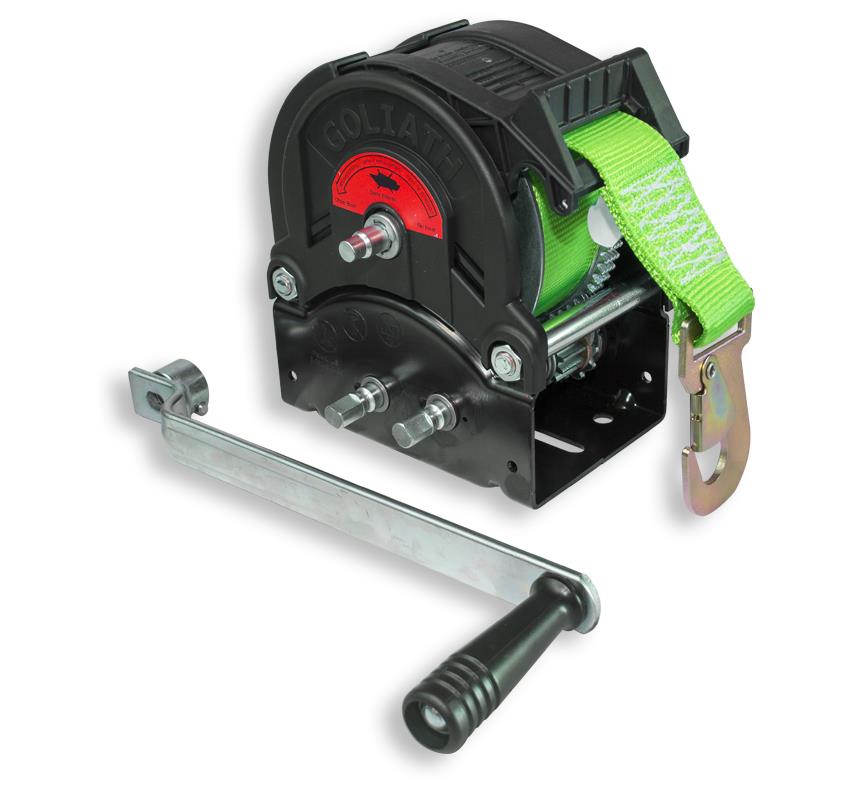
The European standard EN13157 A1 defines the handling of the boat on a trailer as a lifting operation (elevation by change of horizontal and/or vertical level), and requires a permanent safety brake (active in all circumstances when the boat exerts a tension on the strap), a strap or a cable in conformity with the regulation, as well as a protection of the pinions and active parts of the winch.
Our trailers are equipped with the Goliath TS winch, the only self-braking winch on the market that allows the strap to be unwind freely (punctual neutralisation of the brake) and has an automatic reengagement device of the safety system under load. This winch benefits, when the load requires it, from a double speed allowing to reduce by 50% the efforts in the rise as in the descent for more comfort.
We guarantee the conformity of the winch and the CE marking which depends on it.
2. THE STOWAGE
The stowage is mandatory and it is the driver’s responsibility to ensure its compliance.
Here is a list of the risks you may encounter if your tie-down system is not in conformity:
- The boat rips off the winch support and collides with the towing vehicle in the event of braking or impact.
- The weight of the boat is shifted outwards, with the risk of taking the trailer with it in the event of a swerve (sudden and brutal avoidance).
- The "dolphin" effect induced by the forward and backward movements of the boat on the trailer.
- Extension of the textile straps (up to 7%, especially in case of rain).
- Breaks, cuts and other wear and tear of the textile straps.
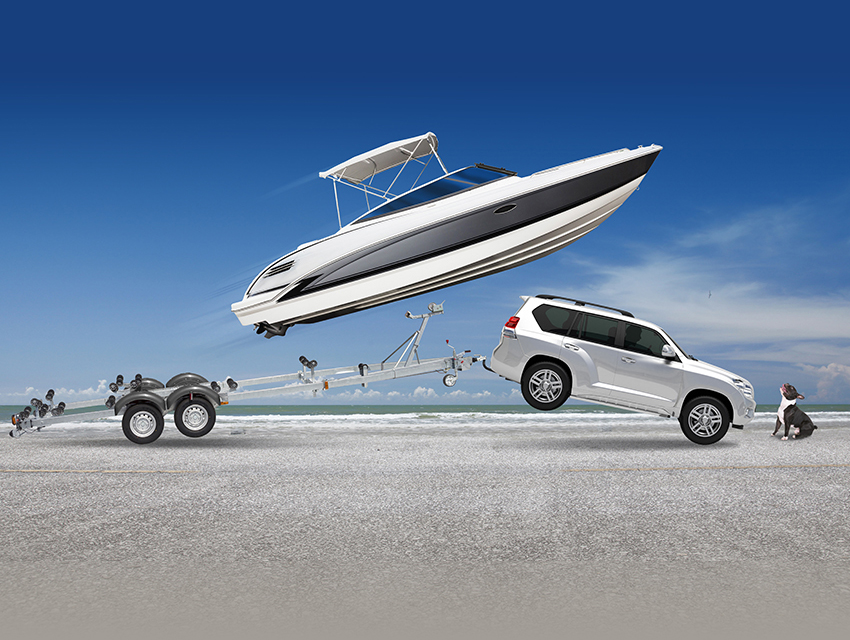
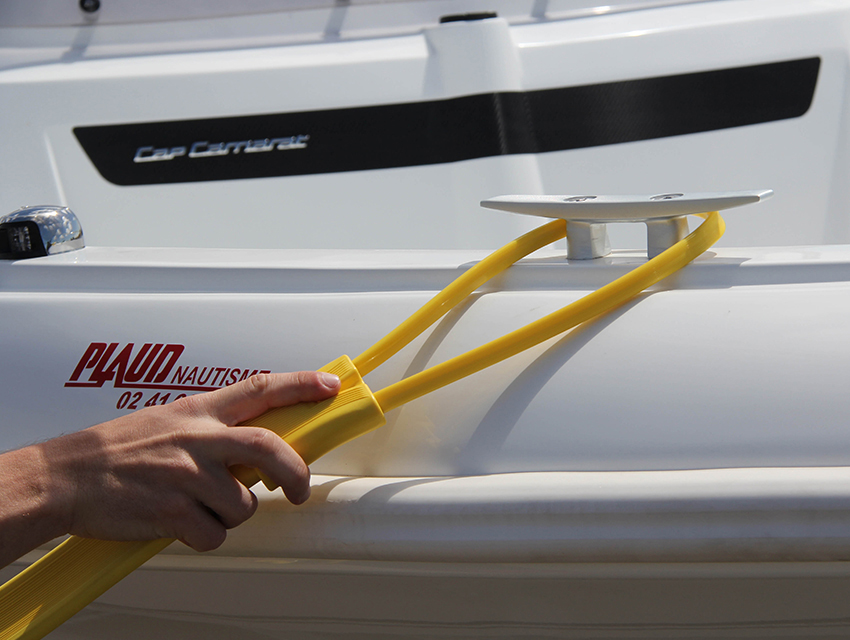
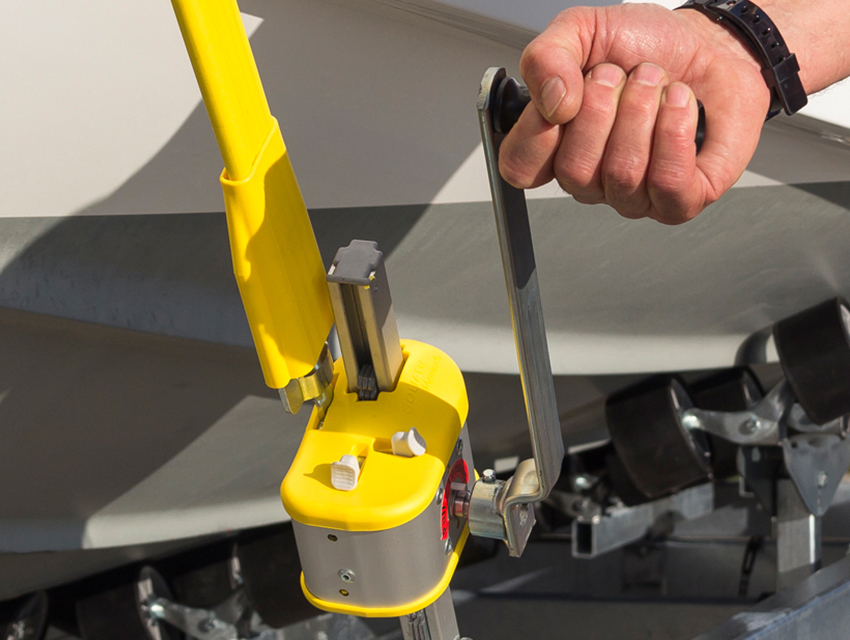
The European standard EN12195 1-5 defines the rules for calculating the compliance of the stowage of a load on a rolling vehicle. In principle, the tie-down system must allow the boat to remain attached to the trailer under all circumstances.
Three factors are important:
- The type of stowage: a 4-point cross stowage to completely immobilise the boat (3 points for rigid boats of less than 1 ton and 1.6 tons for semi-rigid boats).
- Tension force: to eliminate potential movements of the boat.
- The non-elasticity of the straps: to eliminate the acceleration/increase in mass factor (stress in case of accident).
Do not hesitate to ask your dealer, or a boating professional, to provide a solution adapted to your trailer.
Our Nautilus, Rocca and Satellite brands are exclusively pre-equipped* with the QuickFlex tie-down system for your safety.
The QuickFlex cross stowage system is designed to secure and adapt to all types of boats up to 3 tons, in strict compliance with regulations.
- This very intuitive system can be installed in the blink of an eye.
- The powerful tensioning is done in a click, thanks to the handle of the Goliath TS winch.
- The elastomer straps with metal core are non-stretchable.
- They immobilise the boat in all circumstances, especially in case of obstacle avoidance or sudden braking, and improve road handling.
- QuickFlex guarantees that the boat's stowage complies with the EN12195 standard and relieves the user of the responsibility of validating the standard.
QuickFlex replaces ratchet straps, which are unsuitable, fragile, extendable (up to 70 cm) and whose tensioning force is limited.
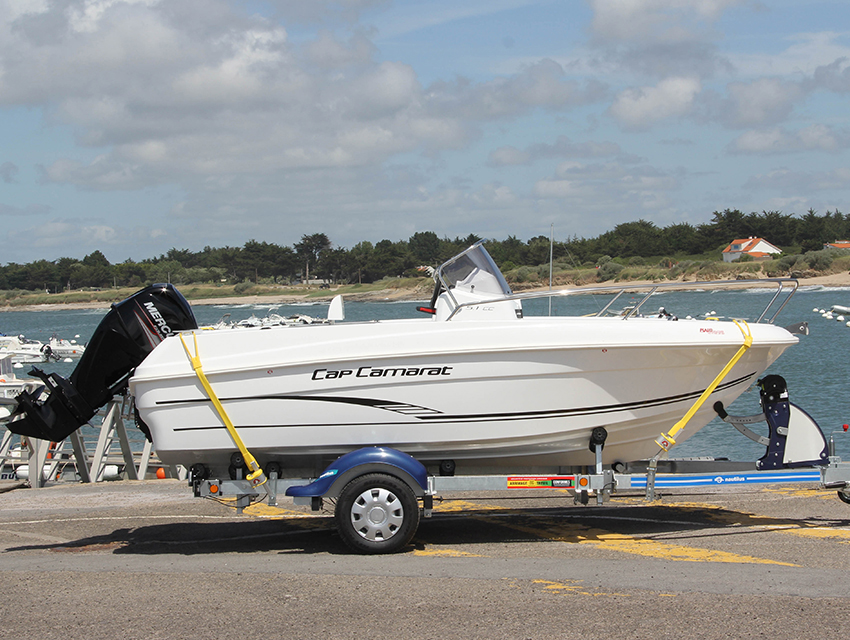
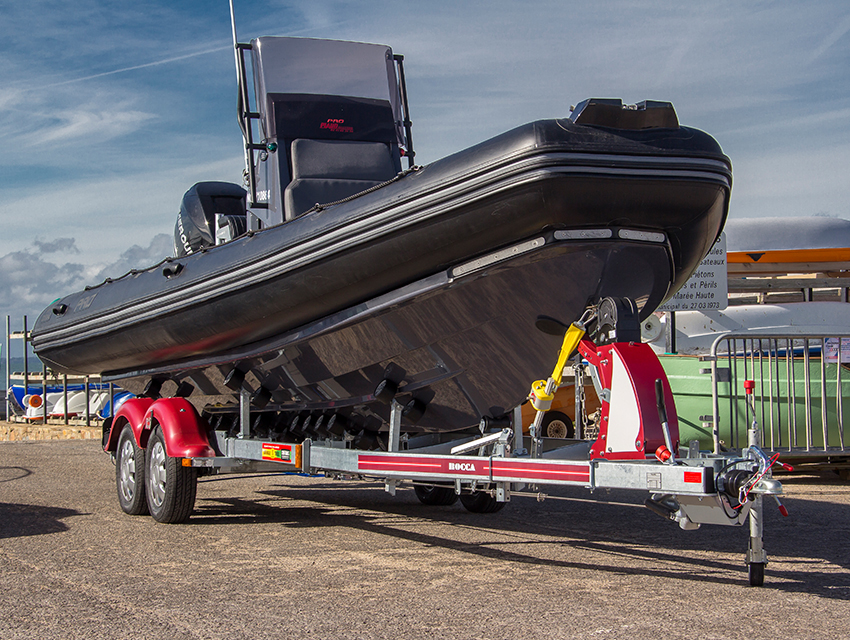
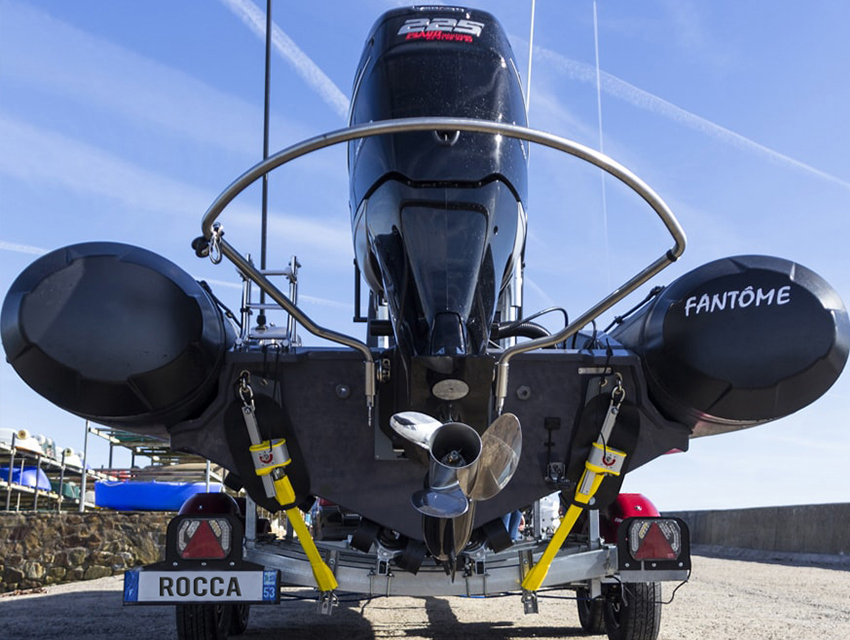
3. THE EUROPEAN APPROVALS
Each trailer must have a certificate attesting to its conformity to travel on European roads.
This certificate required for the registration of the trailer mentions its serial number, which will later be transferred to the registration card. All our trailers of less than 3T of payload benefit from a European homologation which guarantees their conformity to a road use.
The homologation defines, for each trailer or type of trailer, the conformity of its construction according to the standards, but also the conformity of the main components such as the couplings, the rolling and braking systems, the signalling (lights), the wheels and mudguards, etc...
Each trailer of a given brand is therefore compliant as long as it is built and maintained with the original components provided for in the approval. Therefore, the original approved components must be used for the maintenance of the trailer. Otherwise, the trailer will no longer be suitable for road use and the manufacturer will no longer be liable.
The other safety components are also governed by European regulations that protect users. The standards define the conditions of design, manufacture and use that guarantee the safety of people and the boat. European trailer manufacturers are legally obliged to comply with these provisions, otherwise they are liable.
